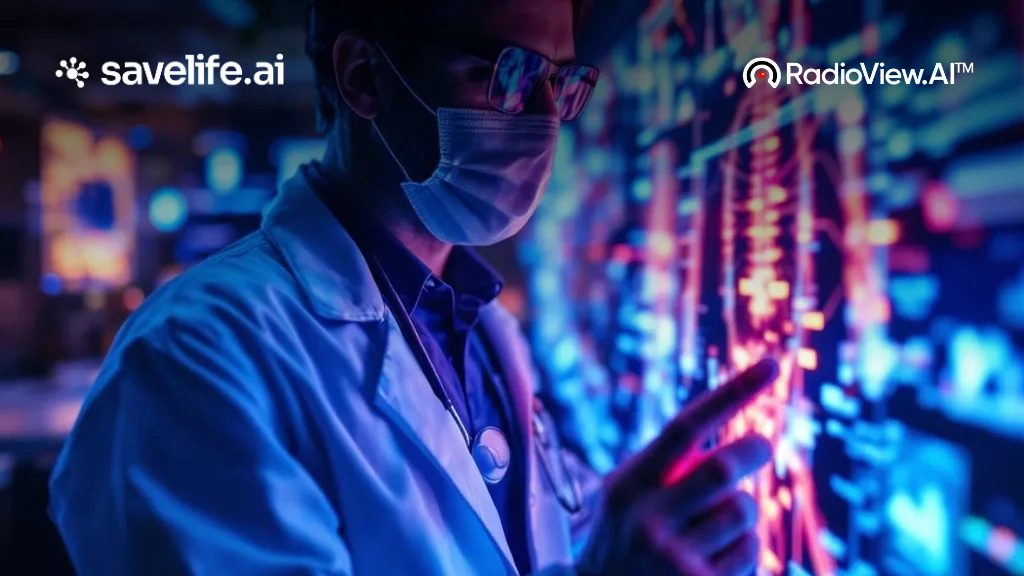Artificial intelligence (AI) is reshaping the global healthcare industry, particularly in radiology it is revolutionizing diagnostics and accessibility. With AI-powered solutions, radiologists can enhance efficiency, improve patient outcomes, and extend healthcare services to underserved regions. One such innovation, RadioView.AI, is automating radiology reporting and integrating seamlessly with existing PACS systems. This transformation is reducing diagnosis times, optimizing hospital workflows, and addressing the global shortage of radiologists.
The Role of AI in Global Healthcare
A Paradigm Shift in Medical Imaging
AI is bridging medical gaps by providing real-time, accurate diagnostics. Traditional radiology workflows are often time-consuming and labor-intensive, but AI streamlines processes by rapidly analyzing images and generating comprehensive reports.
Improving Accessibility with Cloud PACS Solutions
Cloud-based Enterprise Imaging – Cloud PACS Solution enables radiologists to collaborate across multiple sites via mobile applications. This technology allows specialists to read and interpret medical images remotely, ensuring timely diagnoses even in resource-limited areas.
Enhancing Radiologist Efficiency
Solutions like RadioView.AI Automated Radiology Report Generation (ARRG) optimize reporting by converting key findings into structured reports, reducing speaking time by up to 80%, and boosting revenue by at least 50%. Additionally, billing automation through ICD-10 and CPT coding simplifies medical institutions’ financial operations.
How AI is Transforming Radiology
Addressing the Shortage of Radiologists
Globally, there is a severe lack of trained radiologists, particularly in low-income countries. AI-powered diagnostic tools can assist general physicians by providing preliminary image assessments, allowing them to make informed decisions even if radiology specialists are absent.
Reducing Diagnostic Errors
AI algorithms are trained on vast datasets, making them capable of detecting anomalies such as tumors, fractures, and lung diseases with high precision. By minimizing human error, AI ensures accurate and timely diagnoses, improving patient outcomes.
Case Study: AI in Pediatric Lung Imaging in Zambia
An AI-powered lung ultrasound (LUS) system is helping detect pneumonia in children in Zambia. The PedLUS dataset, introduced by researchers, trains AI to identify lung consolidation patterns, proving that AI can address global healthcare challenges by adapting to diverse medical needs.
AI in Advanced Medical Imaging
AI-Enhanced Ultrasound Technology
Handheld and wearable ultrasound devices powered by AI make advanced medical imaging more accessible. These compact solutions are particularly beneficial in low-resource settings, where traditional imaging infrastructure is lacking.
CT and MRI Interpretation with AI
AI accelerates CT and MRI diagnostics by prioritizing critical cases, flagging abnormalities, and expediting treatment plans. With AI-driven automation, hospitals can improve workflow efficiency and reduce patient wait times.
Challenges in AI Adoption for Healthcare
The Need for Diverse Training Data
Many AI models are trained on datasets from high-income countries, which leads to biases when applied to different populations. To enhance global healthcare, AI must be trained on diverse datasets that reflect varying demographics and disease patterns.
Regulatory and Ethical Considerations
AI-driven healthcare solutions must comply with ethical standards, ensuring patient privacy and transparency in decision-making. Regulatory bodies must oversee AI applications to maintain medical integrity and safety.
Financial and Infrastructure Barriers
AI implementation requires significant investment in digital infrastructure. Many developing nations lack the resources to foster partnerships between governments, tech companies, and healthcare institutions necessary for progress.
The Future of AI in Global Healthcare Radiology
The integration of AI into radiology is set to grow exponentially. Future developments may include:
- Wearable AI-powered imaging devices for real-time diagnostics
- Enhanced AI telemedicine solutions to expand remote healthcare services
- Automated real-time AI diagnostics at the point of care
As AI continues to evolve, it promises to democratize radiologic care, ensuring high-quality diagnostics for all, regardless of location or economic status.
Conclusion
AI-driven radiology is revolutionizing global healthcare by making diagnostics faster, more accurate, and widely accessible. With innovations like RadioView.AI and cloud PACS solutions, advanced medical imaging is becoming more efficient and cost-effective. As AI technology advances, it will play a pivotal role in bridging healthcare gaps, ensuring that quality medical care is no longer a privilege but a universal right.
FAQs
- What is the meaning of global health care?
Global health focuses on improving health outcomes for vulnerable populations worldwide by reducing disparities through research, education, and collaboration. - What are the principles of global health?
Key principles include social justice, sustainability, reciprocity, respect, honesty, humility, accountability, equity, and solidarity. - What is the difference between public health and global health?
Public health focuses on specific regions, while global health addresses health issues that affect people worldwide. - How can we solve global health challenges?
Strengthening public health in data, laboratories, workforce, prevention, innovation, and policy helps address global health challenges.
Reference:


